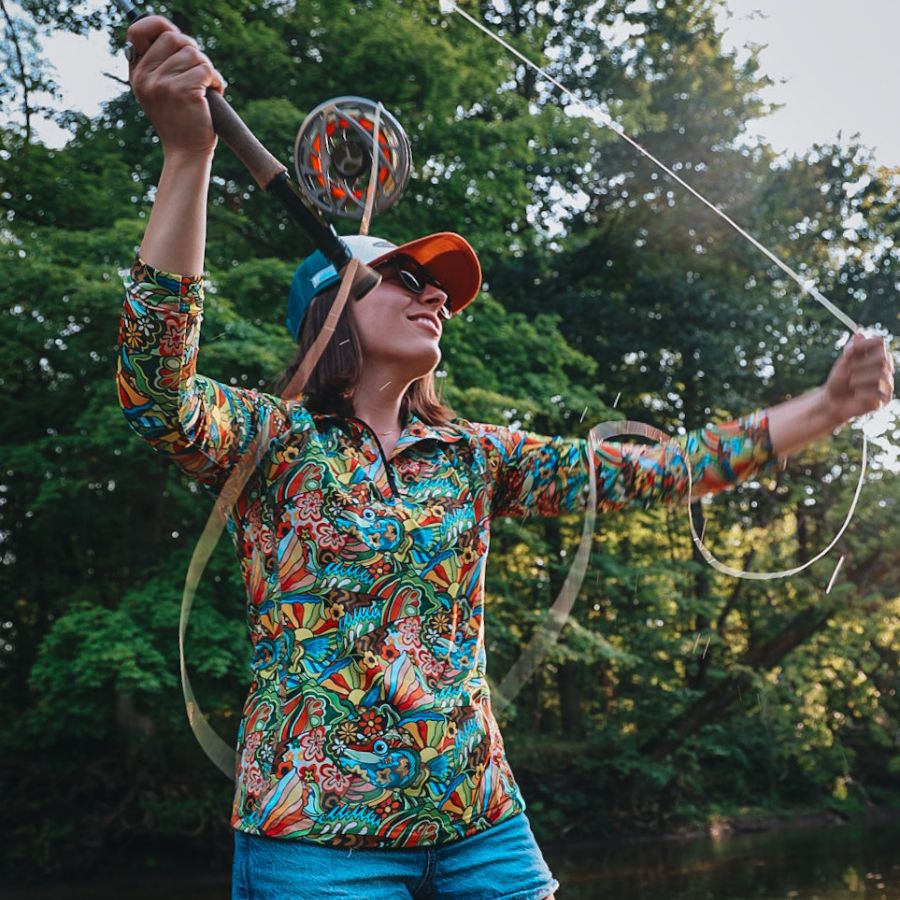
Nicole Watson: A Journey from Childhood Fishing to Grayling Reintroduction
Growing up, I frequently visited a town named Grayling in Michigan each summer. My parents did not fish, but I loved the water. Often, I would go down to the dock and watch an elderly man fly fish. One day, he gave me a bamboo pole with line tied to the end and told me to give it a try. I was nine years old and caught my first sunfish right from the dock. It was nothing fancy, but it worked. I began to notice the drawings and statues of this fish with a large, colorful dorsal fin and was told that they were Grayling, the town’s namesake, and were no longer in the river and hadn’t been for a very long time.
These early memories stuck with me and were refreshed when my spouse and I began to fly fish regularly in 2003. Later, through my academic career, I found my path and pursued a degree in fisheries. I began to explore the history of Grayling and the many attempts to reintroduce them to Michigan during this period. In doing so, I realized that my goal was to answer questions that I felt were key if Grayling were ever to be successfully reintroduced and that this would require detailed research. This became my goal: to research Grayling for my doctoral dissertation, aiming to determine potential impediments to the reintroduction at the earliest life stage for Grayling when survival is key. At the time, I was studying juvenile Rainbow Trout which led me to consider focusing on young Grayling, those within their first year of life.
My research is now complete, and I will always feel a strong connection with Grayling. They are a brilliant species with unique colorations, a large dorsal fin that seems unexpected in a freshwater fish and inhabit regions that require ultimate resiliency. Arctic Grayling, as one would expect by the name, require cool/cold water and are often found in northern latitude streams. They are susceptible to habitat disturbance, over-fishing, and invasive/non-native species such as Brown Trout who compete for resources as early as age-0 and will readily outcompete Grayling. They often delicately take a dry fly with a gentle, subtle motion in which you rarely hear a sound as they arc gently at the surface with their prized bug doppelganger. Other times you may only see a light sip at the surface. To get away from the danger (being caught), I have experienced Grayling either actively breaching the water, jumping out of the water in the epitome of the classic fight, or turning down and away and feeling like you are in a fight with a small submarine. Either way, I find Grayling exhilarating and ever awe-inspiring and my connection to the underwater world, runs through this fish.
By Nicole Watson, Ph.D. Candidate
Adventures of a Fish Biologist
nwatsongrayling.com













Leave a comment
This site is protected by hCaptcha and the hCaptcha Privacy Policy and Terms of Service apply.